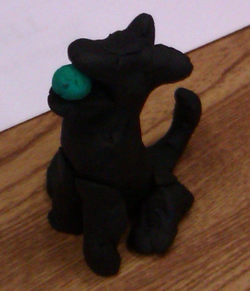Educational psychology offers fascinating glimpses into the human mind. Theories abound as to how we learn and why lessons sometimes fail to transfer into the desired knowledge or behavioral outcomes. One reason training misses the mark is because it fails to be engaging. Instead of holding interest, it’s boring. Instead of illuminating, it’s gloomy. What’s a trainer to do?
Sixty years ago, one group of educational researchers identified three learning domains that educators must tap into in order to assure good transfer of knowledge and behaviors. Specifically, these domains are: cognitive (reasoning and thinking), affective (emotions and feelings) and psychomotor (actively doing). This grouping of learning modes is known as Bloom’s Taxonomy, named for Benjamin Bloom who led the team of educational experts responsible for proposing this classification system.
Trainers often tap into this taxonomy when designing training. By providing an opportunity for learners to move beyond cognitive engagement, trainers encourage learners to explore emotions linked to the subject matter and involve learners in physical activities designed to simulate the brain and connect the proverbial dots.
Here is a great example of how Bloom’s Taxonomy was utilized in a customer service training session:
I gave crayons, pipe cleaners and cans of Playdoh to groups of employees and asked them to build, draw, or otherwise describe their loyal customer. They could pick any customer – internal or external. And as they constructed this customer, they needed to discuss these questions:
- How does this customer feel?
- What do they know?
- What do they say?
- What do they do?
- What can we do to nurture and foster our relationship with this customer?

This activity was well received and brought a good amount of humor to the training. And once these groups were finished, they shared their creations and their answers to these questions in group discussion. While most learners constructed people made of pipe cleaners or Playdoh, one group created this Scottie dog holding a ball. My first thought was that this group completely missed the purpose of the exercise, but then they proved to be perfectly on target.
- How does this customer feel?
- Just like this adorable dog, a loyal customer feels happy, like he belongs and is part of the family.
- What do they know?
- Like this dog, a loyal customer knows he has fun every time he comes to this establishment.
- What do they say?
- Like this dog, a loyal customer never has to growl. He only yips with contentment.
- What do they do?
- They keep coming back! And they bring their friends!
- What can we do to nurture and foster our relationship with this customer?
- We must treat our customers right, have fun with them, and make them feel cared for.
This exercise led the larger group to discuss each question in great detail, exploring specific ways to improve their interactions with their internal and external customers. And in the particular case of the Scottie dog, we explored how we could have fun with the customers. This was Bloom’s Taxonomy in action. It was meaningful, it was memorable, and it transferred the learning into positive changes in customer service.
Training should never be dry and boring. When training is being designed, trainers need to keep in mind that learners are their customers. And just like this little Scottie dog, learners want to feel like they belong, they want to have fun, and they need to feel cared for. A little Bloom avoids the gloom.